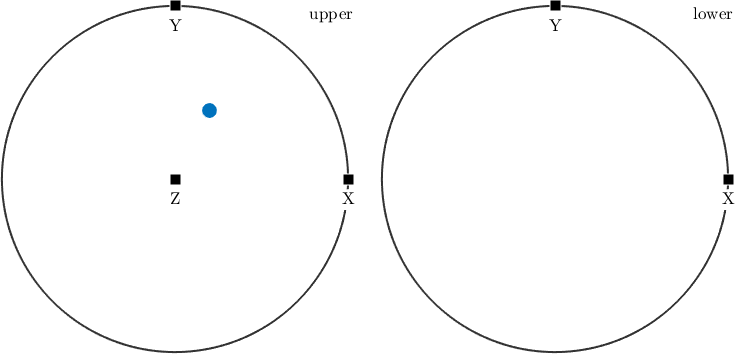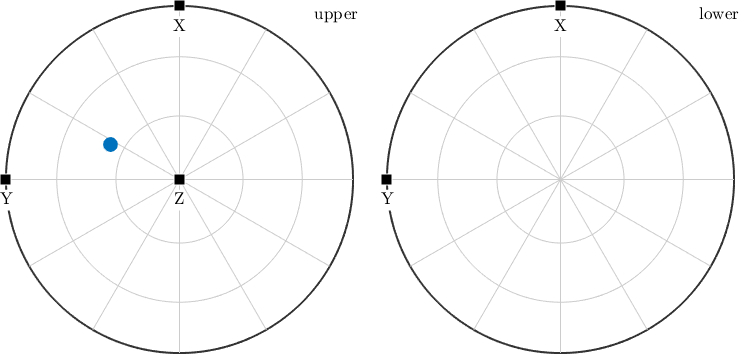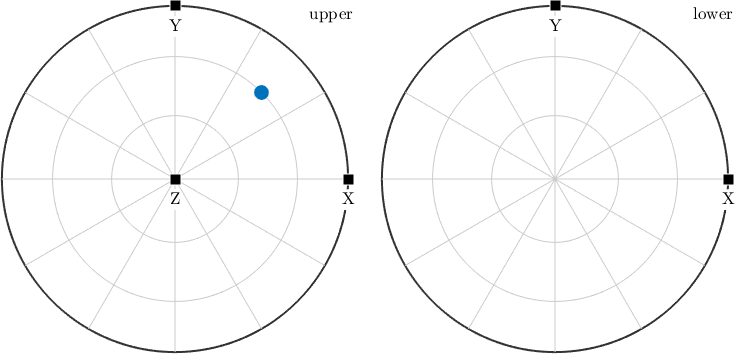Three dimensional vectors in the Euclidean space are represented by variables of the class vector3d.
Cartesian Coordinates
The standard way to define specimen directions is by its x, y and z coordinates.
v = vector3d(1,2,3)v = vector3d (y↑→x)
x y z
1 2 3This gives a single vector with coordinates (1,1,0) with respect to the X, Y, Z coordinate system. Lets visualize this vector
plot(v)
annotate([vector3d.X,vector3d.Y,vector3d.Z],'label',{'X','Y','Z'},'backgroundcolor','w')
Note that the alignment of the X, Y, Z axes is only a plotting convention, which can be easily changed without changing the coordinates, e.g., by setting
plotx2north
plot(v,'grid')
annotate([vector3d.X,vector3d.Y,vector3d.Z],'label',{'X','Y','Z'},'backgroundcolor','w')
One can easily access the coordinates of any vector by
v.xans =
1or change it by
v.x = 0v = vector3d (y←↑x)
x y z
0 2 3Polar Coordinates
A second way to define specimen directions is by polar coordinates, i.e. by its polar angle and its azimuth angle. This is done by the option polar.
polar_angle = 60*degree;
azimuth_angle = 45*degree;
v = vector3d.byPolar(polar_angle,azimuth_angle)
plot(v,'grid')
annotate([vector3d.X,vector3d.Y,vector3d.Z],'label',{'X','Y','Z'},'backgroundcolor','w')v = vector3d (y←↑x)
x y z
0.612372 0.612372 0.5
Analogously as for the Cartesian coordinates we can access and change polar coordinates directly by
v.rho ./ degree % the azimuth angle in degree
v.theta ./ degree % the polar angle in degreeans =
45.0000
ans =
60.0000